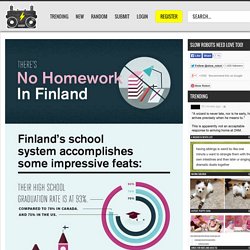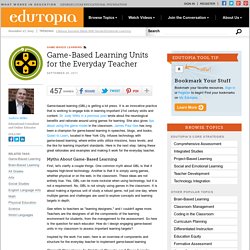

On line power point zoom.
Development. Piktochart. Infographics & Data Visualization. Prezi - Ideas matter. Famous Trials - UMKC School of Law - Prof. Douglas Linder. No homework in Finland. See this hat?

Tis' my cat. SCORE 135 the creation of the internet SCORE 148 I'm not even mad... That was amazing. "exotic" SCORE 200 A reader lives a thousand lives... Hey dude can you pass me a beer? I hope she said "yes"... Love at first fight. 26 Amazing Facts About Finland's Unorthodox Education System. Born to Learn ~ You are Born to Learn. What works best. This page has now been revised (May 2010) in the light of John Hattie's recent apparently definitive work Visible Learning; a synthesis of over 800 meta-analyses relating to achievement (London; Routledge, 2009).

The first thing to change has been the title, which used to be "What works and what doesn't". Hattie points out that in education most things work, more or less. The questions are around those which work best and therefore best repay the effort invested. This site is mainly about your own individual practice as a teacher, and as such it tries to take into account your particular circumstances, such as the students you teach (assumed largely to be over school-age), your subject, your setting (school, college, university, work-based or informal adult education). It recognises that it is difficult and even unreasonable to generalise, but we ought to set alongside this the results of very generalised research in the form of meta-analyses. Hattie, 2009: 7-8 (my emphasis) Feedback But! A Safety & Regulatory Compliance System.
OAESA Professional Conference. US Population Animation. What works best. Ultimate List of Free Online Video Courses. The Smithsonian’s Hardcore History Posters Rule. College Education, Is The Debt Worth It? - Universities.com. With the cost of tuition rising almost every year, many students wonder is a college education still a good investment?

We all know the story, the uber-successful guy with only a high school diploma. While anecdotal evidence may suggest otherwise, hard data indicates: a four-year degree can indeed pay off. Improved marketability, increased wages, and enhanced job satisfaction are often attributed to a degree. Not all degree programs are created equal. Certain majors are more in demand than others, and lower-cost university programs offer better cost-to-value ratios than pricier institutions. Instant screencasts: Just click record. Game-Based Learning Units for the Everyday Teacher.
Game-based learning (GBL) is getting a lot press.

It is an innovative practice that is working to engage kids in learning important 21st century skills and content. Dr. Judy Willis in a previous post wrote about the neurological benefits and rationale around using games for learning. She also gives tips about using the game model in the classroom. James Paul Gee has long been a champion for game-based learning in speeches, blogs, and books.
Myths About Game-Based Learning First, let's clarify a couple things. Gee refers to teachers as "learning designers," and I couldn't agree more. Inspired by the work I've seen, here is an overview of components and structure for the everyday teacher to implement game-based learning Overall Structure: Individual Quests and Boss Levels A game-based learning unit should consist of both smaller quests and more robust boss levels.
Boss levels are more rigorous missions that require students to synthesize the content and skills learned in the quests. Breaking News sst6. Illinois Loop: Education Buzzwords. 8 People Ridiculously Good at Ordinary Jobs - CollegeHumor Video Playlist. Redesigning Education: Rethinking the School Corridor. "I am entirely certain that twenty years from now we will look back at education as it is practiced in most schools today and wonder how we could have tolerated anything so primitive.

"-John W. Gardner, Secretary of Health, Education and Welfare, "No Easy Victories" (1968) Education reform is in the air and taking root in thousands of classrooms across the country. From overhauling No Child Left Behind to closing poorly performing schools and raising student expectations, the push for change is powerful. Yet, the space where most learning takes place--the school and classroom--has changed little over the last 200 years.
Even before students set foot in a classroom, most schools still are built like factories: long hallways, lined with metal lockers, transport students to identical, self-contained classrooms. School designers have used the double loaded corridor for easy circulation. Photo courtesy of the American Architecture Foundation Let's design hallways with human beings in mind.